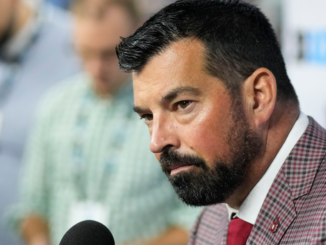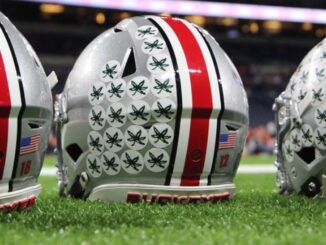
TERRELLE PRYOR JOINS FORMER COLLEGE STARS IN SUING NCAA OVER UNPAID NIL

In an Ohio federal district court on Friday, Pryor—a former Ohio State quarterback punished by the NCAA in 2010 for his involvement in the free tattoo controversy known as “tattoogate”—filed a lawsuit against the NCAA, Learfield, Ohio State, and the Big Ten Conference. As a representative of all former Ohio State athletes who competed before the NCAA permitted NIL in 2021, he is requesting that his complaint be recognized as a class action. According to the complaint, the potential class action is valued at over $5 million.
The legal arguments made by Pryor are strikingly similar to those by Denard Robinson, Braylon Edwards, Michael Martin, Shawn Crable and Bush. They owe much of their legal theories to former UCLA basketball star Ed O’Bannon, who in 2009 successfully sued the NCAA and Electronic Arts over the denial of NIL payments regarding the likenesses of college athletes in video games used without their permission.
Pryor makes perhaps the strongest case for why the previous system was detrimental to him. According to his grievance, he won the 2008 Big Ten Freshman of the Year award and led the Buckeyes to the Big Ten championship in 2009. A year later Pryor was the MVP of the Rose Bowl. Then, the NCAA intervened in his career trajectory.
Pryor fled for the 2011 NFL supplemental draft, when the Raiders selected him in the third round, rather than serving out his ban. However, the NFL suspended Pryor for five games before he could make his rookie debut with the Raiders (despite the fact that he had done nothing wrong during his time in the league) on the grounds that Pryor “undermined the integrity.” of “draft eligible rules.” Pryor, now 35, went on to play for five NFL teams over seven seasons, his most successful stretch coming after a transition from quarterback to wide receiver.
Like Bush, Pryor argues that the claimed harms are ongoing and therefore not time-barred in order to counter this defence. He contends that Pryor and other athletes in his class are seen in “videos” that the NCAA “hosts” on YouTube and its website. The complaint emphasizes that these videos “can only be viewed after watching a commercial advertisement from which the NCAA profits.” Additionally, Bush’s attorneys note that “streaming game films, stock footage, and imagery for commercial purposes” continue to use his and other former Buckeyes players’ NIL. or editorial use, reruns of vintage video games, images, posters, and other products.”
Pryor’s acceptance of the regulations as a prerequisite to his candidacy and scholarship is perhaps another line of defence. Even though the NCAA has faced criticism for trying to utilize amateurism as a defence against antitrust charges, the NCAA still has this tactic at its disposal and it will probably be brought up in a petition to dismiss these kinds of cases.
The fact that the NCAA is currently facing essentially three separate lawsuits in different federal districts is concerning, and it’s hard to predict how many former collegiate players will bring complaints of a similar nature in other jurisdictions. In the end, the lawsuit might be combined into a single venue, preventing judges from making contradictory rulings and relieving the NCAA of having to to incur heavy legal fees playing defense across the country. This has happened before in sports litigation: More than 300 lawsuits brought by retired players against the NFL over concussions and long-term neurological ailments were eventually consolidated.



Be the first to comment